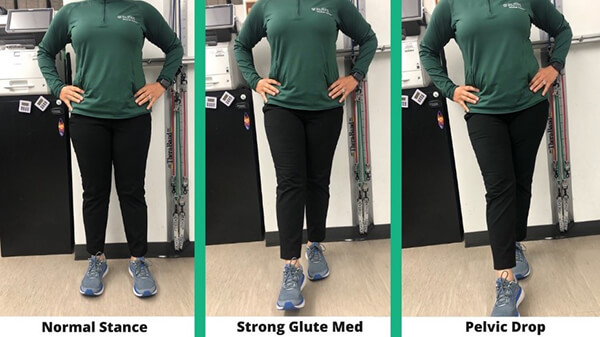Running injuries can be prevented. Here’s how.
Posted on 8/11/2021
Recently, I had a runner try to increase their pace by 30 seconds from one weekend to the next. The result? Severe pain along the inside of their shin and the start of spending two days a week in physical therapy.
Many running injuries are due to overuse and/or improper training. Up to 70% of recreational and competitive distance runners sustain an overuse running injury during any one-year period.1 One of my favorite questions to ask runners is, “Other than running, what exercises are you doing?” Usually the response is, “You mean running isn’t enough exercise?”
Running injuries can be prevented. One of the keys to proper training is cross training. The most important group of muscles to strengthen for runners are those along the side of your hip, mainly your glute medius and glute minimus.
When people hear glutes, they immediately think of their buttocks. But, two of the smaller glute muscles – the glute medius and minimus – are often overlooked. The glute medius and minimus are vital hip muscles and their main function is to stabilize your pelvis.
When you’re walking, think about the moment you put your right foot down and swing your left leg through. Does your left hip drop down? If so, then you may have some weakness in these stabilizers along your right side. Now, imagine running more than five miles and this is repetitively happening without you knowing. Imagine the wear and tear this is taking on your body. Weak hips place unnecessary stress along your back, knees and feet. The good news is that this can be prevented.
How do you strengthen your glutes? Here are some simple exercises that do not require much equipment.
- Sidestepping: Place a resistance band just above your knees (easier) or above your ankles (harder). Keeping your toes pointing forward, side-step in a mini squat about 20 feet. Then, return to the start without turning around.
- Jane Fondas: Lay on your left side completely against the wall, head, back and heels. Place a towel behind your right heel and keeping your toes pointing straight forward. Slowly lift your leg up/down. Repeat on other side.
- Side planks: These can be done from your knees or feet.
- Knee side plank: Slowly bring your buttocks back then forward to target multiple fibers of the muscle.
- Hydrants: On all fours, lift your knee out to the side without letting your hips tilt.
For more information or to request a complimentary injury screen with one of our licensed physical therapists, please contact the center nearest you today. In the meantime, train smart, run fast and run happy!
By: Sarah Zayyad, DPT, CMPT, CDNT, Cert-ART, physical therapist with RUSH Physical Therapy.
1: Ferber, R., Hreljac, A., & Kendall, K. D. (2009). Suspected Mechanisms in the Cause of Overuse Running Injuries: A Clinical Review. Sports Health: A Multidisciplinary Approach, 1(3), 242–246. https://doi.org/10.1177/1941738109334272


